When we think about bees, the benefit that automatically comes to mind is honey and all of the products that are made from this deliciously sweet and tangy ingredient. However, we have many more reasons to be grateful to bees! Our small winged friends are actually an essential part of the global production of food and the balance of ecosystems. It may sound like an enormous responsibility for such a small insect, but the key for their worthy services to planet Earth and humanity can be understood through the process of pollination. Pollination is basically the way in which most plants are able to reproduce thanks to the help of insects and other animals, bees having the leading role by far. Unfortunately, climate change, pollution and the use of pesticides in agriculture are affecting the natural relationship between insects and plants and this will have negative consequences for humans and global biodiversity in the coming years.
However, scientists and other specialists have said that it is possible to help bees in our own backyards and balconies. There are certain gardening styles and kinds of plants that can transform our gardens into a perfect place for bees and other pollinator insects to rest, enjoy a nectar meal and restore their batteries. In this article you will find gardening do’s and don’ts for you to enjoy your garden and simultaneously help to save wildlife. Read along, take notes and redesign your garden into a bee-friendly shelter!
First of all, how does pollination works?

Bees get their food and nutrients from the nectar produced by a huge variety of flowering plants. By feeding on these flowers, bees take pollen grains in their fuzzy bodies from one plant to another, this enables fertilization and triggers the production of fruits, seeds and a whole new generation of plants!
This can be a bit confusing but just think about the most characteristic trait of plants which is the lack of motion and being attached to one spot throughout their lives. This lack of mobility has forced them to evolve in extremely creative ways. The breathtaking beauty and diversity of flowers, much appreciated by humans, is actually not for us but rather dedicated to insects and birds. Their shapes, colors and aromas are calculated marketing strategies for drawing the attention of these animals. Flowers can be understood as nature’s billboards advertising delicious food in exchange for the matchmaking service that insects unintentionally offer to plants.
We should be extremely grateful for this special relationship between plants and insects! Thanks to that we get to enjoy beautiful flowers, eat delicious fruits and vegetables, and have luscious gardens to contemplate and spend our free time.
Why are bees so important for us and the planet?
Bees are more than just honey and painful stings during summertime! They are an essential element for the planet to work properly, here are two of the main reasons bees should be appreciated and protected by everyone:
- Food production: it is calculated that around 75% of crop plants need the services of different animals in order to achieve pollination. And among these pollinators, bees are by far the most important ones. Do you enjoy blueberries and apples? How about coffee? Pumpkins, strawberries and almonds? Well, all of them are available for us to enjoy thanks to bees!
- Biodiversity: many species of plants exist thanks to specific relationships with local bees and other insects. It is an extremely fragile balance that can be altered if one of the pieces is removed from the system. Biodiversity of plants is linked to a healthy community of pollinators. For example, some orchids are able to reproduce thanks to only one specific species of bee, so if this insect disappears it will be impossible to protect the plant in the pollination relationship.

What are the main issues threatening bees?
In recent years there has been a huge decline in the population of bees around the world. In Europe there are around 2,000 wild species of bees, 10% of these species are currently endangered and a third of the European bee populations are in decline. Here are some of the reasons behind this global problem:
- Destruction of habitats: since prairies with wildflowers have been substituted by sprawling concrete cities and monocultures, bees are having a hard time finding reliable sources of food, this is leading to a rise in bee mortality worldwide.
- Use of chemical pesticides: chemical substances that are used to keep at bay different pests are having collateral damages in bee populations. By feeding on flowers of plants that have been treated with toxic pesticides, bees can easily die or even take these negative effects to their hive and unchain even more negative effects.
- Climate change: the rise of temperatures is affecting bees and other pollinators. Some wild bees can only survive in very specific climatic ranges. If plants bloom earlier than normal this also means that entire populations of insects won’t be able to access food for a whole season. Parasites from tropical environments will be able to affect insects from temperate climates and this will lead to radical ecological imbalance.
How to help bees through gardening
After getting all of the basics about bees, pollination and the ecological problems threatening these amazing insects, you’re ready to receive the practical information about what you can do to help and change this situation. Here are the things you should be doing and the things you should be avoiding in your garden, balcony, rooftop or window garden box:
Things to do:
- Embrace native wild flowers: Think about it, if you make a selection of plants that naturally grow in your area, they will need less attention, they will be appreciated by the local bees and insects and you will be growing a sustainable garden since they will require less water and fertilizers. Basically, you will be letting nature do its own work!
- Keep the flowers all-year-long: It is totally doable to have flowers all-year-round, and this will be very much appreciated by your local bees. You just need to do some garden planning and consider the seasonality of the plants that you will be growing. Daffodils and tulips are perfect for spring; zinnias, coneflowers and roses are some classic summer flowers; asters and pansies in autumn; black chokeberry and snowdrops are tolerant to low temperatures and snow in winter.
- Try planting fruit trees: In addition to having delicious and fresh fruit available in your own garden, bees will be super thankful for flowering trees such as: apples, peaches, pears, almonds and plums. Trees can also provide ideal refuge for insects and birds.
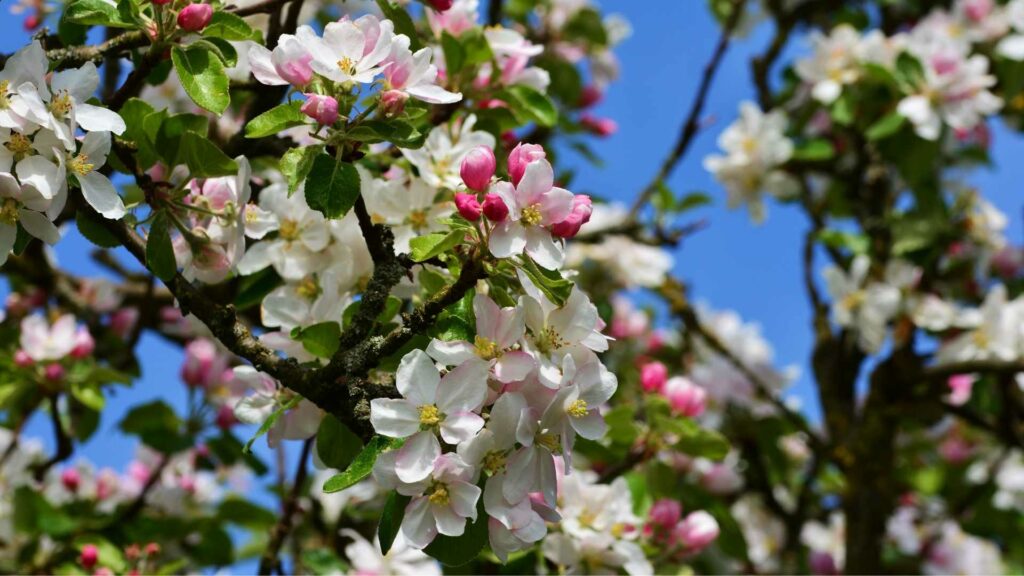
- If it’s fragrant, it will be a hit: Lavender, basil, lemon balm, thyme, borage, marjoram, mint, fennel, chives, hyssop, are some of the options you have for making your garden a lot more fragrant and attractive to bees.
- Bees will appreciate fresh water: After a long trip bees will be thirsty and in the need of a source of fresh and clean water. Use a shallow dish or container and put some rocks and pebbles in it (bees need somewhere to land; they can drown easily in deeper containers or ponds), then fill it with clean water. You can place this in a spot with high bee activity, it will become a popular meeting place in no time.
- Install an insect hotel: Insect hotels are structures made with wood and other materials that offer nesting space for specific kinds of insects. Solitary bees are different from the well-known honeybees since they are not communal, they make nests directly in the ground or digging holes in wood, an insect hotel seeks to replicate this and provide safe space for nesting. You can buy them or try making them yourself! Just be sure to do some research and build the correct kind of hotel corresponding to the local insects flying around your area.
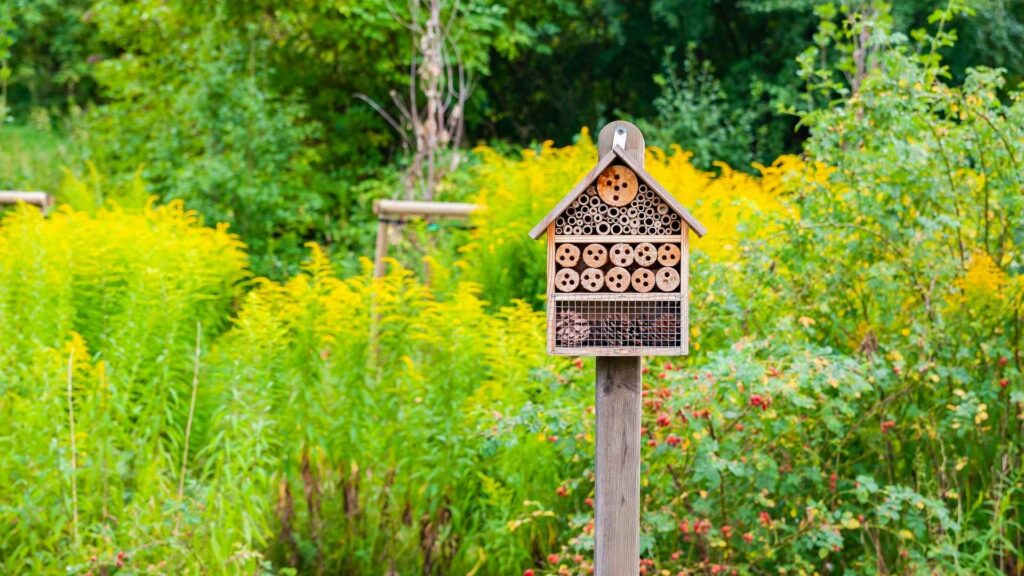
- Try the „wild prairie“ aesthetic: The famous Dutch garden designer Piet Oudolf has revolutionized global gardening trends by focusing in using perennials and wild grasses. Currently this “wild prairie” aesthetic is very much appreciated internationally, and you can replicate this in your own garden! Both your human and insect neighbors will love it.
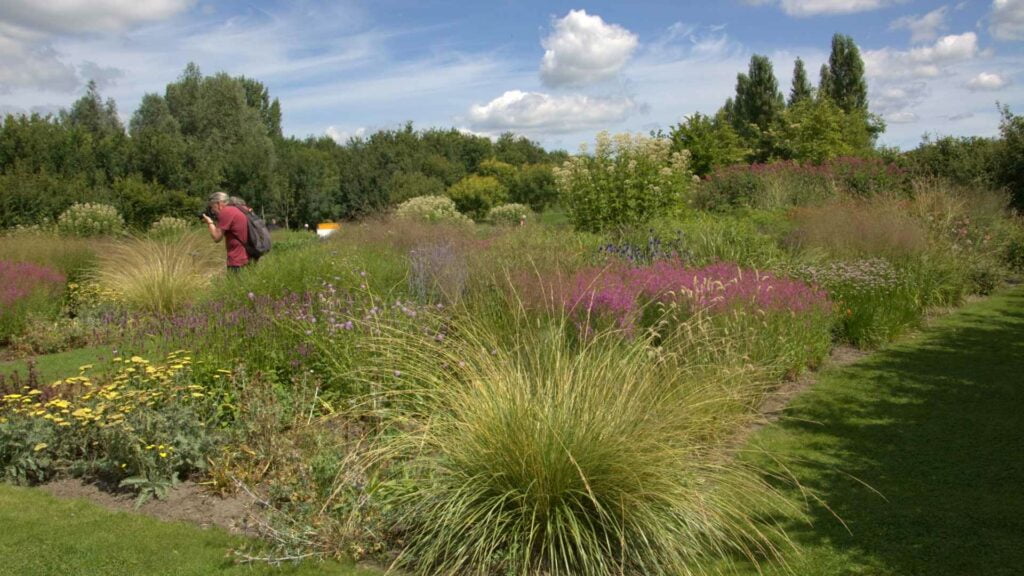
- Add some climbing plants: Vines are also a perfect source of refuge and rest for insects and pollinator birds. Vertical climbing plants are also an amazing way to take advantage of limited space. Wisteria and honeysuckle are two examples of vining plants that are loved by bees.
- Diversity is key: Having a wide variety of flowers, shrubs and trees is the best way to provide a safe environment for bees and other pollinators because it mimics their actual habitats and will provide a comfortable refuge for them.
- Let the veggies bloom: Cutting blooms is a well-known technique for making a plant channel all of their energy into just a few fruits or vegetables. Unfortunately, this will eliminate many food sources for bees, let your veggies bloom for a change!
Things to avoid:
- Don’t use chemical pesticides and herbicides: the bad thing about this kind of products is that they will ravage any kind of insect life in your garden, even the beneficial insects. If you live near a forest, it may also impact the ecological balance of nearby ecosystems. If you have a pest problem, you can try organic products such as: essential oils, garlic, vinegar, Castile soap, pepper or Epsom salt.
- Don’t buy treated plants: most crops in the world and some of the plants sold at garden centers and plant nurseries are pre-treated with neonicotinoids (also known as neonics), which are a kind of pesticide that attacks the nervous system of insects. This is very bad news since these substances also affect beneficial insects such as bees, bumblebees and wasps. When buying plants or seeds you should check the labels or ask the nursery staff if they have been pre-treated with neonics. The use of this sort of substances has been related to the collapse of insect colonies worldwide and some countries have prohibited their use in agriculture.
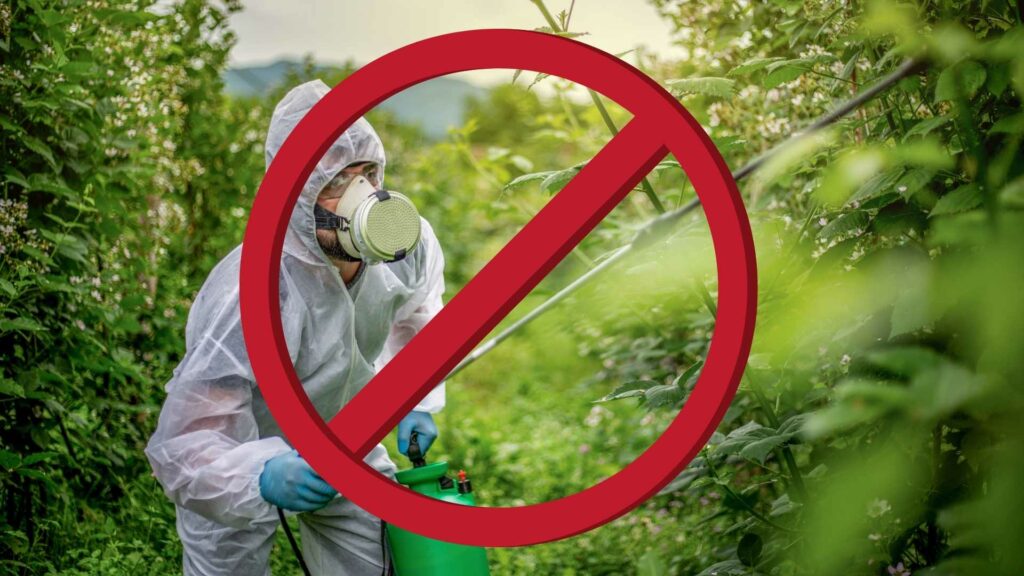
- Avoid lawns if possible: A perfect lawn may look beautiful, sadly it has very negative consequences for the environment. They need constant watering, maintenance and they take large plots of land which could be brimming with local wildflowers useful for pollinators. Sadly, bees cannot feed from grass!
- Give up on the constant weeding and mowing: Many insects make nests directly in the ground, constant mowing will disturb this nesting process. Some common weeds like dandelion are very much appreciated by bees, so by weeding you’re throwing away a rich buffet of pollinator food!

Top 10: Plants loved by bees and gardeners

- Borage (Borago officinalis): annual herb appreciated for its culinary and medicinal uses, the lovely blue flowers are edible and have a sweet honey-like taste! They are visited frequently by bees and butterflies.
- Roses: roses are a garden classic and they are major pollen factories. Choose some of the wild roses varieties, which are more open and have less petals, this means easy access for bees and other insects.
- Lavender (Lavandula): a fragrant plant that is appreciated worldwide, it is a must-have for any Mediterranean style garden. It is known for loving full sun and their beautiful purple flowers. You can use the flowers for making herbal infusions, potpourris and essential oils.
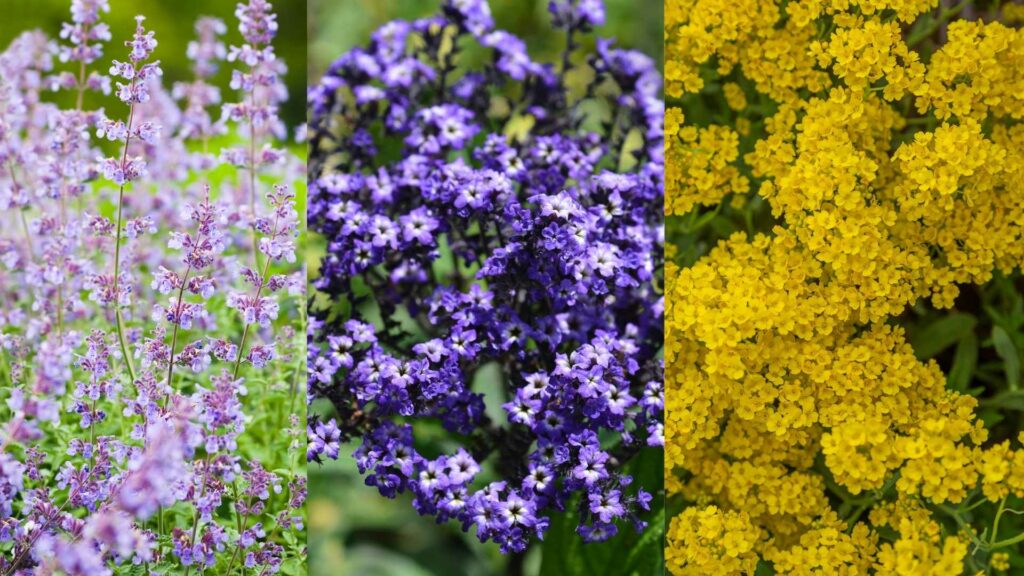
- Catmint (Napeta racemosa): this plant is loved by bees and, as the name implies, it is quite attractive for our feline friends as well! It is also used as a pest deterrent. It is extremely tolerant and doesn’t require any special care. It grows like crazy! So in the blink of an eye your garden will be filled with these gorgeous violet flowers.
- Heliotrope (Heliotropium arborescencs): with flowers that range from deep purple to white and a scent that has been described as a fusion between cherry and vanilla. This plant is popular among bees and butterflies. It has been featured in cottage-style gardens. If you want to achieve amazing blooms be sure to give your heliotrope a good amount of morning sun and afternoon shade, along with constant moisture with a well-drained soil.
- Basket of gold (Aurinia saxatilis): it is a lovely low-growing plant with eye-catching yellow blooms that will maintain a steady number of bee visitors in your garden! You can cover large areas of ground with this plant, give shape to raised beds or include it in a rock garden. If you have a balcony or a window with a good amount of sun you can add Basket of gold since it can grow really well in containers and pots.
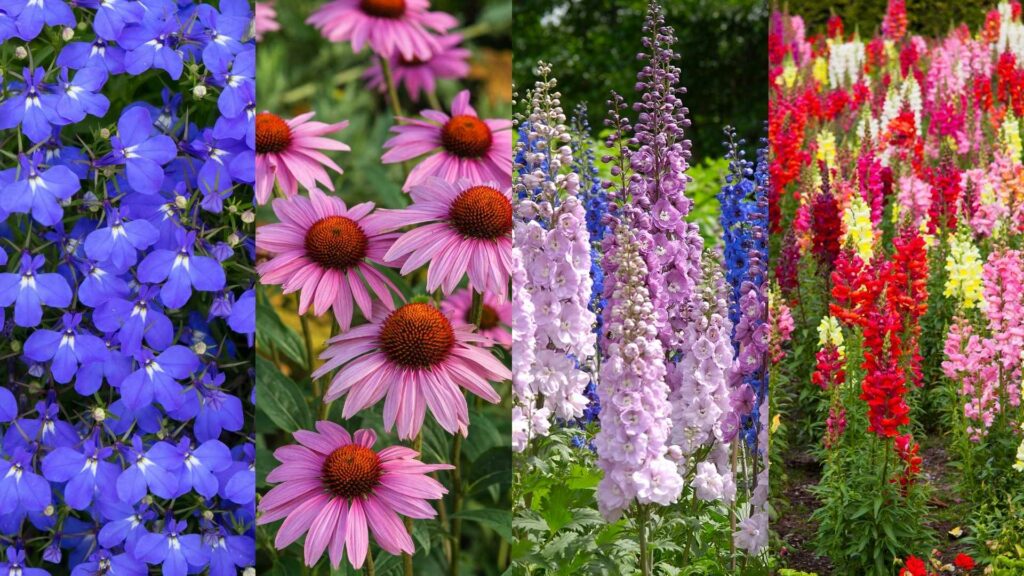
- Garden lobelia (Lobelia reins): this herbaceous perennial plant with beautiful blue flowers is perfect for a small box garden in a balcony. They love shade so you can plant them under larger trees or shrubs. Besides insects they are also loved by hummingbirds.
- Echinacea: if you’re trying to achieve a prairie-style garden, echinacea or coneflowers are perfect for adding dramatic blotches of color, they grow very well in full sun and they can even be used as food or medicine!
- Delphinium: this vertical dramatic blooms are a classic of British cottage gardens, they are often visited by bees and bumblebees. Unfortunately, they need a lot of care in order to be in proper conditions, they will need constant feeding, well-drained soil and protection from pests. If you’re a dedicated gardener, planting delphiniums might be your next challenge!
- Snapdragon (Antirrhinum majus): a beautiful and tough plant that can handle frost, they have a very long blooming season. They come in a great variety of colors and are quite easy to grow compared to delphiniums. These plants are native to the Mediterranean, where they can even grow in the cracks of walls and other random spots.
Conclusion
As you can see there is an abundance of ways in which you can help bees and other pollinator insects through your gardening. It can also be an opportunity to redesign your backyard, balcony or window-box planter, and enjoy a different way to be near plants and nature in general. Another effective (and yummy) way in which you can help is buying honey and other bee products from local producers, be sure to have a conversation with them, I’m sure that they can give you some insider tips regarding how you can attract more bees to your garden. Doing conscious grocery shopping is also a way to become a good bee ally, keep your vegetables and fruits organic, this will support producers that don’t use pesticides and herbicides, therefore this will keep bees and insects unaffected and healthy. Lastly, if you have a community garden in your neighborhood be sure to talk about these ideas and share the bee-love with everyone. Let us know about your experiences with bees in your own backyard and share any ideas or tips you might have. We hope this post got you inspired and that your garden will be transformed into a pollinator heaven this year!
